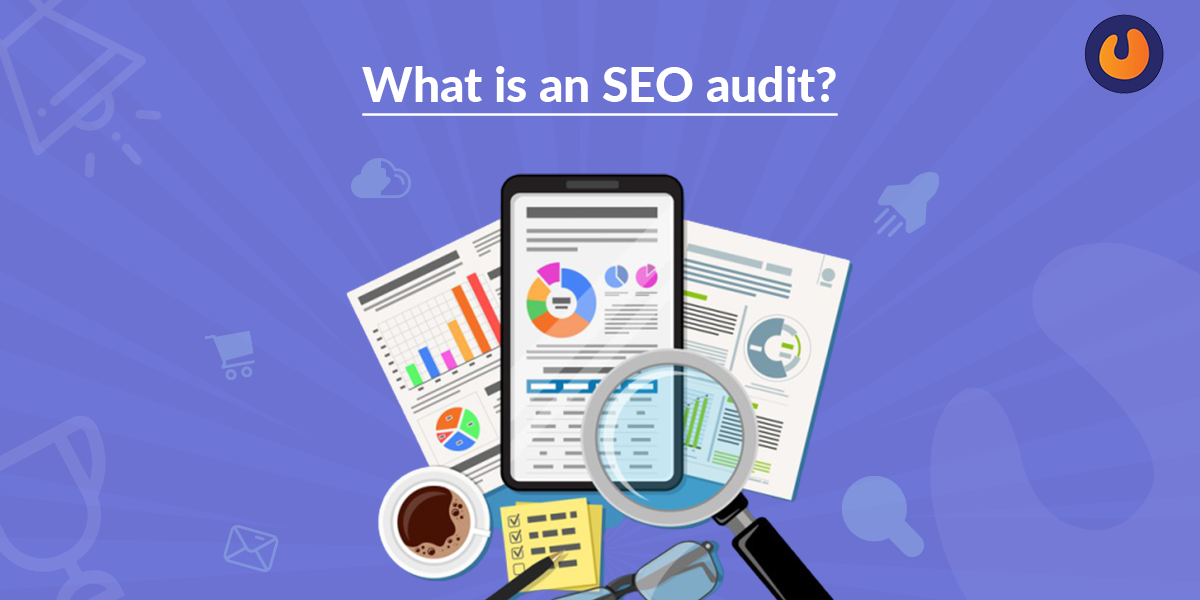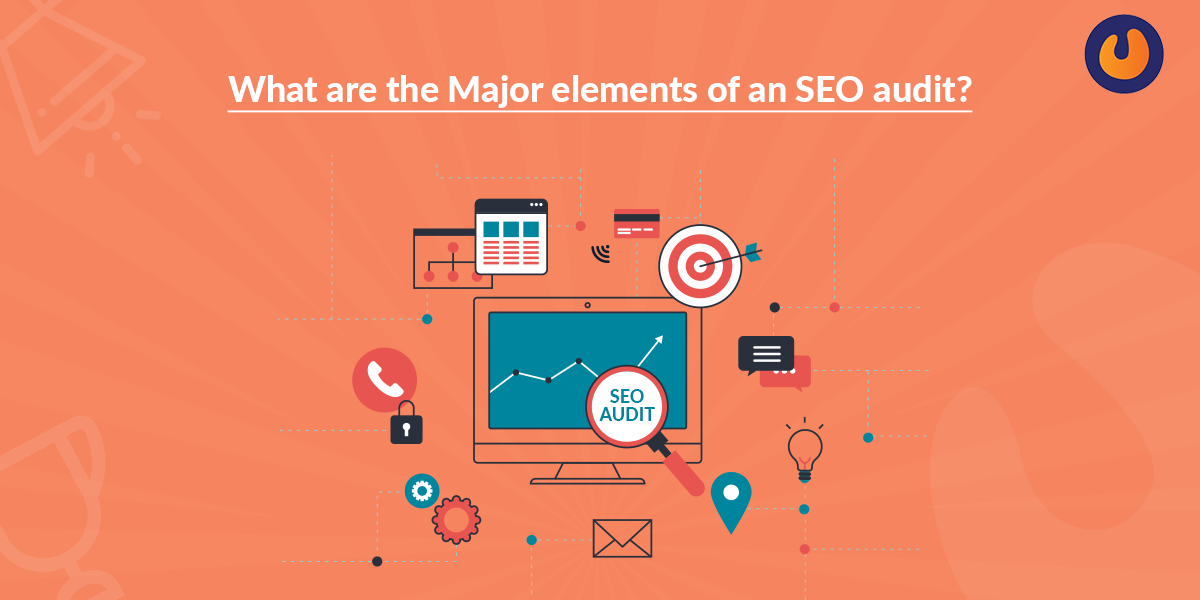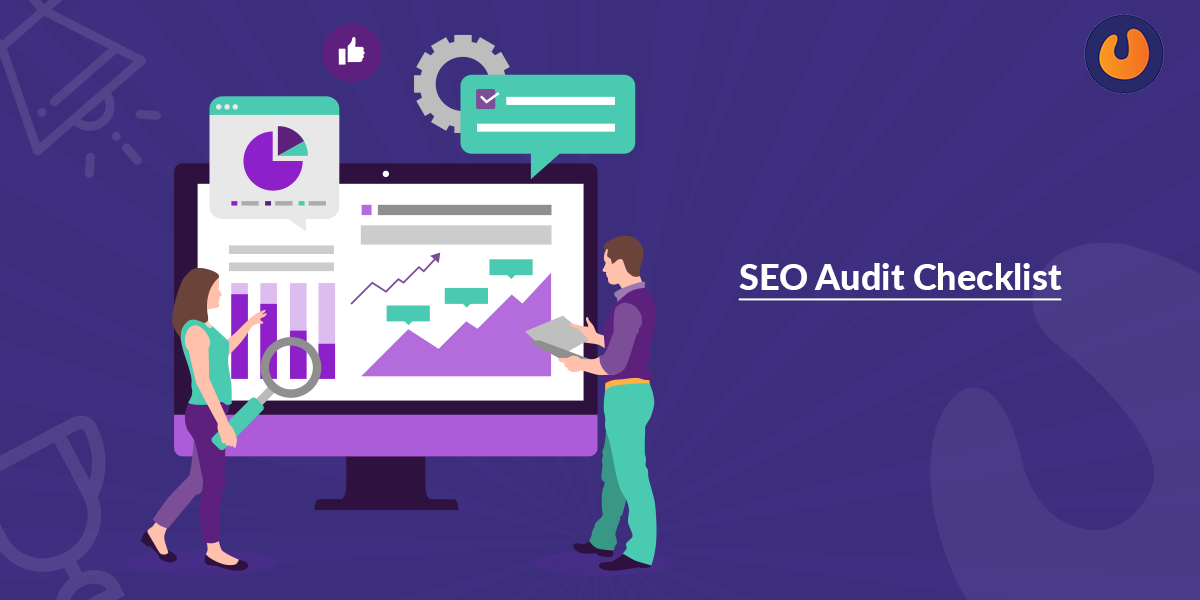

Technical SEO is all about knowing that the website is technologically ideal for search engines and consumers. It is important to have a technical SEO audit to ensure whether the website works properly. This gives your website consumers a pleasant user experience, which sends favorable signals to Google and helps boost your website rankings. Your website is evaluated in-depth in a technical SEO audit focused on different criteria such as the layout of URLs, page design, keyword rankings, or other variables on the List. In search to boost the overall performance of your website in search engines, you should draw practical recommendations from a website SEO audit.
An SEO audit is a method for measuring a website’s search engine friendliness in a variety of areas. An SEO audit’s primary purpose is to help you refine a website so it can reach better positions in the tests of the search engine.

Although there are different methods that you can use to audit a website via SEO, the safest way is either to perform the audit via following a guide or to appoint an SEO auditor to do the job for you. The SEO auditor must personally check the website and come up with feedback on what needs to be corrected and what needs to be done to boost the website’s efficiency in search engines.
Also, Read – 12 Ways to Promote a Local Business Online
Performing a technical SEO audit is essential to all those associated with improving the website, increasing traffic to the website, and increasing page rank. In short, carrying out a professional SEO audit is something that should be relevant for any company on the web.
An investigation must be carried out, if
1.You never performed one before
2.It’s been quite some time since the last audit
3.You have made major improvements to the platform
During an SEO audit there are three main things to consider:
1.Back-end factors such as hosting and indexing.
2.Front-end factors including content, keywords, and metadata.
3.Link standard and sources from outside.
Perhaps you’re not going to have the ability to fix any point of damage. But we prefer to use the 80/20 rule when settling about which audit findings are worth taking action. The most critical part of the SEO for your site is the aspect that the incoming visitors see. If your app isn’t mobile-friendly, that’s all swept away.
Since the implementation of the web-first checklist, you need to ensure that you consider how the site works on the web and guarantee your SERPs are correctly placed.

Also, Read – What Major Digital Marketing Trends
When you successfully perform a technical audit, there will be significant benefits if completed correctly. And it’s not just about adapting keywords on individual websites. It’s all about discovering, and correcting, 404 errors with 301 redirects.
Websites are in continuous flux. Although we want to think we’re still on top of the redirects, stuff often slips between the cracks. If you change a page’s position by setting up a path, this ensures that all the initial SERP cannot be moved over to the new tab. Instead, you completely lose it. Then the latest website practically starts from scratch to hit rankings. Getting these mistakes detected and corrected helps you to retain your existing rankings. Updating the title tags and adding keywords helps you to improve the existing rankings.
Now that you are assured that an SEO audit is a must for any website, let’s see how to do an SEO audit of your website.

The first move is to check if Google is penalizing the web address. When your website is under a manual or algorithmic sanction, it will affect adversely on your rankings.
You should figure out why the fine was levied, why the fine was levied on the website, and create an action plan to fix the problems and remove the penalty. There are two simple ways to search for penalties on Google.
The second move is to check on Google for your brand name and review the results.
Items to verify:
1.Is your homepage showing up in the results first?
2.Is Google showing site links along with your listing?
3.Are the explanation beneath your homepage and other pages correct?
4.Will Google show an information graph entry (Google My Business Listing) on your brand’s right page?
5.Are your GMB page name and other information correct?
6.Are the majority of the sites listed on Google’s first results page important to your brand?
1.Are the ‘searches linked’ applicable to your brand?
2.Do you see any similar searches which you can use to build dedicated pages? ‘Brand name ratings’ are typical examples.
The next step in the process is to have the website fully checked, beginning with Professional SEO.
Technical SEO comes first as you need to ensure search engines can navigate and index the sites without any complications.
Don’t worry, you don’t have to be a developer or system administrator to go through the phase, but it’s called technical.
Technical SEO Checklist
Here’s the guide for the Technical SEO website audit. If some of the activities are hard to grasp, use the links given to find out more.
Is your website registered with Google search console and Bing webmaster tools?
If not, otherwise this is the highest priority.
Google’s search console is a free Google tool that provides webmasters with information about their websites.
Anything that Google knows about the website is included in the different tools and reviews for the app.
These stuff as:
1.How many pages Google submits and how many pages it currently indexes.
2.Which keywords you rate your website with.
3.Which keywords have created traffic inside Google?
4.Privacy or other problems about indexing your website
5.Issues with Phone accessibility
6.And even more.
Many of the Google search console configurations/notifications will be addressed below.
Did you specify a preferred domain in Google Search Console?
Google finds websites that start with www in front of the domain, i.e. https:/www.example.com and no www in front of the domain, i.e. https:/example.com, to be two separate websites.
You should define your desired domain by setting the canonical URLs correctly to prevent any redundant content problems.
Is your robots.txt file optimized?
Both websites have a robots.txt, so it is used by search engine crawlers to monitor which pages will be available.
A robots.txt error will cause severe indexing problems so optimization of robots.txt should be high on the agenda.
Do you have SEO Friendly URLs?
While most website creation tools and CMS today have this installed properly, it’s also a good idea to check your URL structure to make sure you have SEO compliant URLs.
You will see to it that the URLs are special and correctly formatted for every page. Consider, for example:
This is a non Optimized URL:
http://www.example.com/12/badformattedurl/121358898
This is a good URL:
http://www.example.com/good-formatted-url
Good URLs contain keywords (but not loaded with keywords), contain hyphens (‘-‘) to distinguish keywords, are special for each article and are fewer than 255 characters (including the domain name).
Breadcrumb menu activated?
Typically the breadcrumb menu is displayed at the top of a tab, and it allows users to get back to the homepage by following the links to the menu.
Google also offers a breadcrumb guide, because it makes it easy for consumers to browse the website.
Test to make sure your breadcrumb menu is set correctly.
Do you have structured data enabled?
These days, organized data is a really hot subject, and it will continue to be for years to come.
By applying organized data mark-up to a website, you’ll help Google understand the context and meaning of your post, providing additional ranking advantages.
Google uses organized data to boost page appearance in search results and speech searches (think of the Google Assistant Questions).
As part of the SEO test, you can check that you have allowed structured data for:
• The dashboard (Logo, Agency & Website)
• Menus Breadcrumb
• The papers
• The goods (see also SEO on Company Page)
Do you have a canonical URL set for all your pages?
What is a canonical URL
A canonical URL lets Google recognize a website’s most relevant sites so webmasters may use it to fix redundant content problems.
Good SEO practices mean that you will have a canonical URL on every page on the site.
Is your 404 Page Optimized?
•A 404 page is the link shown to visitors as they arrive at a link not found on the website.
•A properly designed 404 page is perfect for the smooth user interface and the optimization is very simple.
Is your XML Sitemap optimized?
•An XML sitemap is a directory of all the sites that Google wants to know about the website.
•Your CMS produces the XML sitemap, and it is sent to Google via the Google Search Console.
•Not all of your website pages will be included in the XML sitemap but only those that are relevant to your website.
•To learn how to build and configure your XML sitemap, read my previous article on XML Sitemap optimization.
Is your website HTTPS?
•HTTPS is a recognized indicator of rating. This means websites that have built a security certificate and their URLs start with https, have an advantage over unsecured websites.
•If your website has not yet been https, this is a job to add to the top of your list. Make sure you do it right when making your website https so your scores won’t be impacted.
If you have finished the professional SEO audit and resolved all of the problems, the next move is to resolve the website’s content.
The most critical aspect of SEO Review is on-page SEO. Indeed, other audits only cover this section but, as explained above, our strategy is also to test other regions.
The primary goal of on-site SEO is to help search engines appreciate the importance of the content.
On-Page SEO Audit Checklist
As a website owner, the task is to send the best cues to search engine crawlers by using keywords and other SEO-elements on the blog.
Check Your Internal Link Structure
Linking the pages together is helpful for search engines as well as for consumers.
Test to make sure that you connect similar pages, considering these four considerations:
1.Not only do you use keyword anchor text for internal connections, but you do also use the full page title as well as non-keyword anchor text.
2.There are a larger number of internal connections to the sites you want to rate higher in the quest.
3.The web pages you would like to rate higher are related to your homepage.
4.You have 2-10 internal links per tab.
Check and Optimize Your Titles and Descriptions
Are the headings and definitions special for each page and within the size specified?
Does the customer say what the website is all about from the title and is the summary advertising about what the website has to offer?
Off-Page SEO refers to strategies and tactics that you can use to support your online website. Usually referred to as the construction of links. Google’s algorithm finds SEO Backlinks as ‘votes of confidence’ and websites with strong quality backlinks continue to rate higher in Search searches.
Off-site SEO is important, but if you’re not mindful of what you’re doing, and you don’t know precisely what you’re allowed to do and what isn’t, it’s really dangerous too. Low-quality incoming links will give Google a very good reason to penalize your website
Off-Site SEO checklist
Since the checklist includes just 3 things, you need to do a bit of research before you have a good picture of the current state of off-site SEO.
Evaluate your incoming links and identify toxic links
You will find out about your incoming connections either by using a tool such as SEMRUSH or by using the Google Search consoles monitor ‘Connections to your pages.’
Answer to the following questions while evaluating the incoming report on links:
1.How many separate domains do you connect to?
2.Which domains are classified as Trusted Domains?
3.How many connections do you connect to your homepage and how many connections do you have to your internal pages?
4.Which sites are with the most incoming links?
5.Which proportion of the ties is based on a keyword?
6.What is every link’s ‘toxic score’?
You may need to take certain disciplinary steps, based on the responses, so make sure they are included in the action plan.
It is hard to live online without getting a respectable profile on social media; it’s as plain as that.
When you ignore social media and focus exclusively on search ads than it is like throwing all your eggs in one basket and higher risk.
You have to distinguish the traffic and sales streams to make a living online, and relying on a single source (i.e. Google) is not the way to go.
You may be wondering, how is social media related to an SEO audit?
That is a reasonable question and the answer is plain.
Social networking both specifically (in the form of connections) and indirectly (more visibility that may generate more natural ties and direct visits) impacts your SEO activities, and it is a consideration that may impact your attempts to provide a properly designed website.
What you need to figure out in this segment is that you have a decent profile on the most important social media platforms (Facebook, Twitter, LinkedIn, Instagram and Pinterest), if it’s convenient for users to find and track you throughout certain networks.
Manual VS Automated SEO Audits
What to expect from a manual SEO Audit?
From what you have read above, the importance of a manual audit VS is readily understood as an automatic audit conducted by an instrument.
A method performs an assessment based on a set of predefined guidelines and does not have an SEO audit skills.
There is a range of additional benefits to getting a professional review on the web site. You should search our SEO Audit Service bundles if you want to find out more.
The cost of manual auditing is fair and the website-specific reviews are not repetitive like those created by a computer.
3. Things you should expect:
1.A summary of your website’s current status – It is a comprehensive overview of how your website is doing in search, social media, amount of internal/external links, and all other details related to the actual status of your website.
2.A collection of activities is based on a checklist of SEO assessments along with reasons for every item on the list.
3.A study outlining a systematic Web marketing approach to take advantage of all possible internet traffic channels and resources, and not just SEO.
Conclusion:
Congratulations to all those who have made it to this stage! When you follow the aforementioned guidelines, it’s almost inevitable you’ll boost your rankings and levels of organic traffic. If there’s something vague or a question you didn’t grasp, let me know in the comments below and I’d be more than happy to respond.
